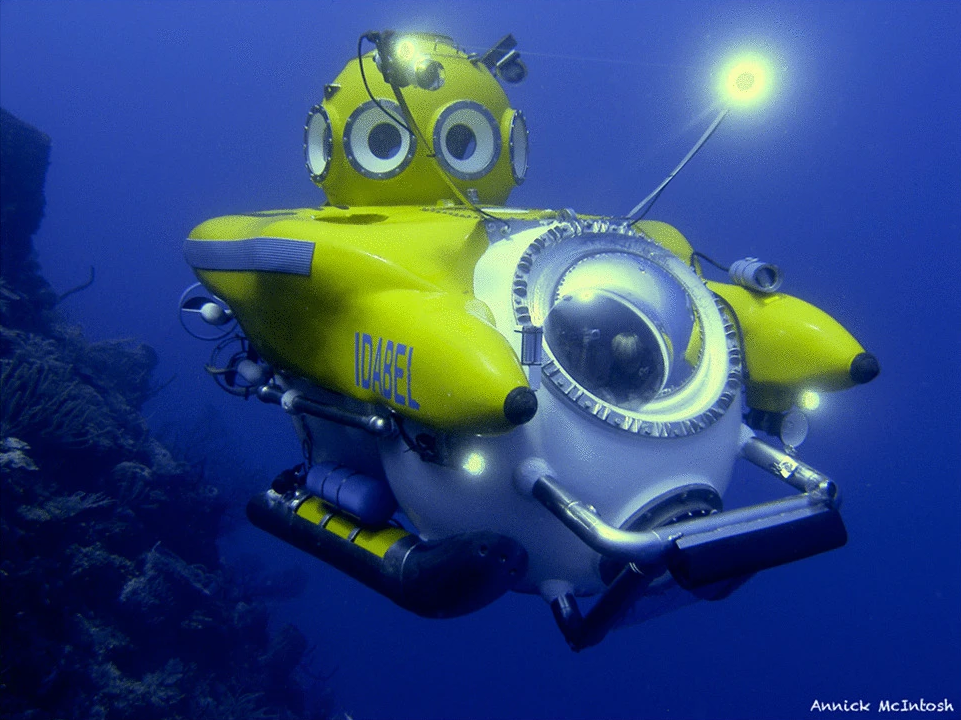
An NCCOS-led research team published the first detailed report of living deep-sea corals and sponges found on the Mesoamerican Reef, the second longest barrier reef in the world.
The report describes deep seafloor communities off Isla de Roatan, Honduras, at the southern end of the reef. The research missions, conducted over a 10-year period using the Roatan Institute for Deepsea Exploration’s Idabel submersible, reached communities as deep as 2,000 feet. The time-series data set compiled — which documents deep-sea coral health, regeneration, and, in some cases, decline due to predation — is the first of its kind for the region.
Unlike many twentieth century expeditions that damaged reefs by deploying trawls and dredges to collect samples, submersible-based research allows scientists to see animals alive, observe their behavior, and track their survival over time using video and still images, all with negligible impact to the environment. Submersibles can also reach steep grades and rocky areas often inaccessible to other types of sampling gear, such as trawls and dredges.
The new publication includes a catalog of images, data on the distribution and abundance of organisms, and notes on the mobile invertebrate community of sea stars, urchins, and deep-sea snails.
Project partners include NCCOS, Harte Research Institute, Texas A&M University–Corpus Christi, Nova Southeastern University, University of Michigan, Roatan Institute for Deepsea Exploration, Schmidt Ocean Institute, and Marine Science and Technology Foundation.
